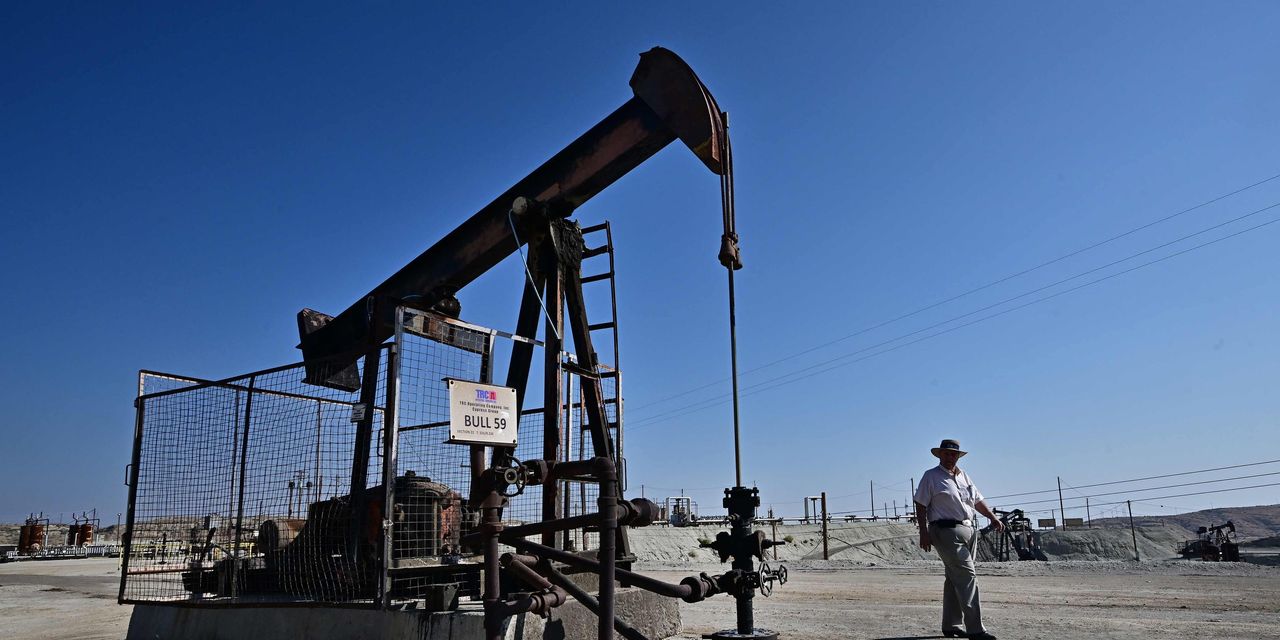Oil futures ended higher Friday, but tallied a third straight weekly decline as worries about the outlook for demand and expectations for a supply surplus have overtaken supply risks tied to the Israel-Hamas war.
Price action
-
West Texas Intermediate crude
CL00,
+0.23%
for December delivery
CL.1,
+0.23% CLZ23,
+0.23%
rose $1.43, or 1.9%, to settle at $77.17 a barrel on the New York Mercantile Exchange, but registered a nearly 4.2% weekly drop, according to Dow Jones Market Data. -
January Brent crude
BRN00,
+0.33% BRNF24,
+0.33% ,
the global benchmark, added $1.42, or 1.8%, at $81.43 a barrel on ICE Futures Europe, for a 4.1% decline on the week. -
December gasoline
RBZ23,
-0.06%
tacked on 1.3% to $2.19 a gallon, with prices down 0.5% for the week, while December heating oil
HOZ23,
+0.18%
added 0.9% to $2.74 a gallon, ending with a weekly fall of 6.2%. -
Natural gas for December delivery
NGZ23,
-0.49%
settled at $3.03 per million British thermal units, down 0.3% for the session, and marking a weekly loss of 13.7%.
Market drivers
Weak economic data out of China and fears of a potential U.S. and global slowdown have become a top concern for traders.
In the U.S., consumer sentiment fell in November for the fourth month in a row, to 60.4 from 63.8 in October, the University of Michigan said Friday.
Crude prices this week traded at the lowest since mid-July before bouncing, more than erasing the modest rise seen following the Oct. 7 attack by Hamas on southern Israel.
“Sentiment has shifted on the oil market: what began as a pricing out of the geopolitical risk premium has ended with a marked correction,” said Barbara Lambrecht, commodity analyst at Commerzbank, in a note.
Oil’s rally over the summer and fall had been attributed in large part to supply concerns, with Saudi Arabia in July implementing a production cut of 1 million barrels a day, which it proceeded to roll over, extending it through at least the end of the year. Russia also pledged to continue a supply cut of 300,000 barrels a day, though analysts say Russia appears to have boosted exports, adding to pressure on the market.
Prince Abdulaziz bin Salman, Saudi Arabia’s energy minister, on Thursday dismissed talk of weaker oil demand, saying it was a “ploy” by speculators.
Key Words: People are just ‘pretending’ oiI demand is weak, says Saudi energy minister. ‘It’s all a ploy.’
Manish Raj, managing director at Velandera Energy Partners, meanwhile, said the potential for an oil supply surplus may be the main reason behind oil’s recent price decline.
“We are not seeing any hint of demand softening,” he told MarketWatch. “Oil demand will undoubtedly decline if we hit a recession, but that day is not today and demand declining in 2023 has a snowball’s chance in hell.”
““Oil demand will undoubtedly decline if we hit a recession, but that day is not today and demand declining in 2023 has a snowball’s chance in hell.””
“The problem isn’t the lack of demand, but rather too much supply,” said Raj.
“Smugglers, dark fleet operators, thieves and black market dealers are working overtime washing and gushing oil produced or stolen from Russia, Iran, Kurdistan, and Nigeria,” he said.
Oil’s path to $100 will depend on a potential resolution among members of the Organization of the Petroleum Exporting Countries to “deepen and extend production cuts,” at their next meeting scheduled for Nov. 26, said Raj.
Read the full article here


